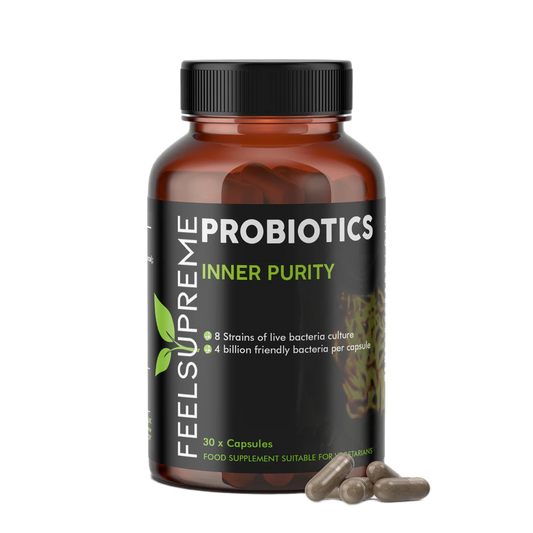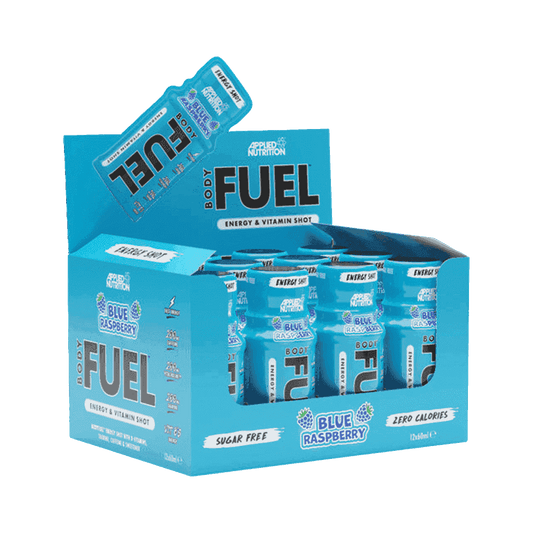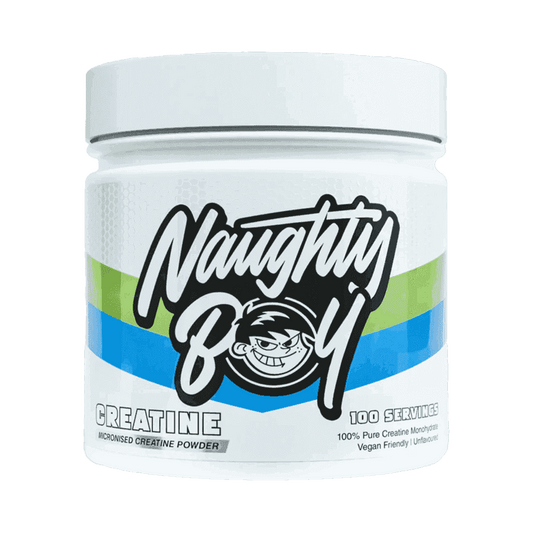Creatine has long been the poster child of powerlifting and bodybuilding—known for fuelling explosive lifts, bulking up muscle, and boosting gym performance. But what if you’re not here to chase deadlift PRs or flex biceps in the mirror? What if your passion lies in HIIT, cycling, running, or a sweaty early morning cardio session?
Surprise: creatine might still be your best ally.
Let’s break the myth wide open—and explore whether it’s really worth taking creatine when you’re not lifting weights.
Should You Take Creatine If You Just Do Cardio?
Here’s the short answer: Yes, and here’s why.
Creatine isn’t just for building size. It helps your body regenerate ATP—your cells' energy currency. The faster you restore ATP, the better your output in short, sharp bursts of effort—think:
-
Sprint intervals
-
Burpees
-
Assault bike pushes
-
High knees, mountain climbers, or hill sprints
Even if your cardio isn't weight-based, creatine supports better recovery between bouts—keeping intensity high and fatigue low. That’s a win for:
-
HIIT lovers
-
Sprinters
-
Footballers
-
Martial artists
-
Group training warriors
If you do long-distance cardio (like running or cycling), creatine’s effects are more subtle—but they’re still there. It may reduce muscle breakdown and help with training consistency, especially if you’re logging multiple sessions a week.
Is Creatine Good If You Only Run?
Cardio purists, listen up.
Running doesn’t always feel like a creatine-friendly zone. There’s no barbell, no squat rack—just heart, lungs, and legs on fire. So why would creatine help?
🧠 Here's how it benefits runners:
-
Faster recovery between intervals
-
Improved muscle hydration, meaning less fatigue in long-distance efforts
-
Reduced inflammation post-run
-
Potential mental boost—creatine has cognitive perks, too
One 2021 study found that trained endurance runners saw performance improvements in sprint intervals and time-to-fatigue tests after supplementing with creatine for six days. It’s not magic—but it’s measurable.
Even recreational runners who don’t care about finish times may notice that muscles feel fresher, less sore, and more responsive when creatine is part of their daily stack.
So yes—if you run, creatine is still a tool worth considering.
Should I Only Take Creatine When I Train?
Creatine doesn’t work like caffeine or pre-workout—it’s not an instant-on switch.
Instead, it builds up in your muscles over time. Most benefits only kick in after consistent daily use, whether you’re training or not.
Here’s what that means:
-
You should take creatine every day, not just on workout days
-
Best results come from saturation—a steady level in your muscles
-
It doesn’t matter what time you take it (but pairing it with carbs may help)
Whether it’s a rest day, a light jog, or a full-blown HIIT session, keep taking your creatine.
🔥 Pro Tip:
Stack it with Applied Nutrition Body Fuel Shot or a banana post-workout to enhance absorption. Or take it with your multivitamin if you’re training later.
Is 2g of Creatine Per Day Enough?
Probably not.
The standard dose for maintenance is 3–5 grams per day. Anything lower, and you might never reach saturation. The only exception?
-
People with a very small frame or low muscle mass
-
Those stacking creatine with high creatine-rich diets (think: steak daily)
But if you’re training with any real frequency—or if you're doing high-intensity cardio—2g per day won’t cut it.
Stick with 3g minimum to start. For faster results, some people begin with a loading phase (20g daily split into 4 doses for 5 days), then drop to a maintenance dose.
💡 If you're using Naughty Boy Prime Creatine, each scoop delivers 5g—perfect for once-a-day dosing with no fluff.
What Are the Downsides of Creatine?
Let’s keep it real. Creatine is safe for most people—but it’s not 100% side-effect-free.
Here are the most common concerns:
1. Water Retention
-
You may gain 1–3kg in water weight initially
-
This isn't fat—it's water stored in muscles for performance
-
If you do long-distance cardio, this could feel like a drag (especially in heat)
2. Bloating or Stomach Cramps
-
More common if taken without enough water
-
Or from low-quality creatine mixed with fillers
Stick to creatine monohydrate—pure, proven, and trusted.
3. Breakouts
-
Some users report skin issues. This is anecdotal and rare, but worth noting.
💥 The benefits still outweigh the risks for most. If you're unsure, start with a smaller dose and track how your body responds.
Who Should Not Take Creatine?
While creatine is generally safe, avoid it—or consult your GP—if you:
-
Have kidney issues
-
Take diuretics or certain medications
-
Are under 18 (unless supervised)
Also, if you’re not training consistently, don’t expect magic. Creatine isn’t a fat burner or a shortcut—it amplifies your efforts, it doesn’t replace them.
Well… That wraps up Part 1!
Ready for Part 2? It’ll dive into:
-
Creatine vs. cardio myths
-
The science of endurance + ATP
- FAQs like “Does creatine help with cycling?” and “Is it safe without lifting?”
Is It Worth Taking Creatine If You Only Do Cardio? (Part 2)
Creatine vs. Cardio: The Real Story
Let’s tackle the core myth:
“Creatine is for bodybuilders. Cardio doesn’t need it.”
Wrong.
Cardio—especially high-intensity or interval-based cardio—relies heavily on the phosphagen system. That’s the very energy pathway creatine fuels.
Think of it like this:
-
Lifting weights → Creatine helps with explosive effort
-
Sprinting or HIIT → Creatine does the same
-
Steady-state running/cycling → Less reliant on creatine, but still benefits from faster recovery and cell hydration
That’s why athletes in endurance sports—not just lifters—use creatine during training blocks. It’s not about bulking. It’s about efficiency.
Does Creatine Help With Endurance?
This is where it gets interesting.
Creatine doesn’t directly improve VO₂ max or aerobic capacity—but it:
-
Buffers fatigue by improving muscle phosphocreatine stores
-
Delays lactate build-up
-
Helps retain lean muscle mass even during heavy cardio phases
-
Improves recovery, which allows you to train more consistently
Even for endurance athletes, creatine plays a support role in energy systems and post-session regeneration.
For example:
-
Runners may recover faster between intervals
-
Cyclists can improve sprint capacity at the end of a long ride
-
Boxers and fighters benefit from repeated effort bursts
It’s not going to turn a couch potato into Kipchoge. But it can make your cardio output more powerful and your body more resilient.
Is Creatine Safe If You Don’t Lift Weights?
Yes—if you're training at all.
Whether that’s cycling, swimming, or daily metcons, creatine is safe and even recommended. It’s one of the most researched supplements on the planet, and the data overwhelmingly supports its use across training styles.
⚠️ But here’s the thing:
-
Don’t use it if you’re completely sedentary—you won’t benefit, and water retention might frustrate you
-
Don’t expect instant energy—it’s not caffeine
-
Don’t double-dose thinking it’ll speed up results—it won’t
Use it as part of a consistent, active lifestyle, and the benefits become obvious.
What Happens If You Take Creatine But Don’t Strength Train?
Creatine doesn’t care what kind of training you do—it simply fuels your muscle energy reserves.
If you take it and:
-
Don’t train at all → you’ll retain some water, but not gain any benefit
-
Do low-intensity steady cardio → minimal benefits, but recovery may improve
-
Do interval or explosive cardio → huge upside in energy output, fatigue resistance, and even brain health
💡 Bonus: Creatine supports cognitive function, so you might feel sharper mentally during long cardio sessions—even if the physical gains are moderate.
Creatine Timing Tips for Cardio Lovers
When should you take creatine if cardio is your main game?
-
Anytime daily (consistency > timing)
-
Best post-workout with protein or carbs
-
Or stack it with hydration or electrolyte drinks for absorption
For example:
👉 After a 30-minute Peloton session, throw 5g Naughty Boy Prime Creatine into your Reflex Clear Whey shake
👉 Or add it to a chilled bottle of Applied Nutrition Body Fuel Shot after a HIIT run
Should You Cycle Creatine?
Not necessary.
Creatine isn’t a stimulant. There’s no tolerance, no downregulation. You can:
Take it daily, even during deloads or rest weeks
Pause if you stop training for an extended time
Resume without loading phases
In short: keep it in your stack as long as you’re training regularly.
Final Verdict: Is It Worth It?
✅ If you do explosive cardio
✅ If you want to recover faster
✅ If you want endurance with more edge
✅ If you want to maintain muscle while burning calories
Then yes—creatine is 100% worth it, even if you never touch a dumbbell again.
Just use the right dose, stay consistent, and stack it smart.
1. Will creatine improve stamina in cardio?
Yes—creatine supports repeated explosive efforts and improves recovery, which can enhance overall stamina during interval or high-intensity cardio.
2. Is creatine safe if you don’t lift weights?
Yes. Creatine is safe for all types of training, including cardio. It helps improve recovery, fatigue resistance, and even cognitive function—no lifting required.
3. Does creatine help with running performance?
Yes—especially for sprints, intervals, or hill runs. Creatine boosts short-term power and helps runners recover faster between efforts.
4. Can I use creatine for cycling or endurance sports?
Absolutely. Cyclists use creatine to support sprint finishes, repeated climbs, and recovery. It’s especially effective in HIIT-style endurance events.
5. What happens if you take creatine but don’t strength train?
You’ll still benefit if you’re doing cardio or staying active. But if you’re completely sedentary, creatine won’t offer much beyond water retention.





